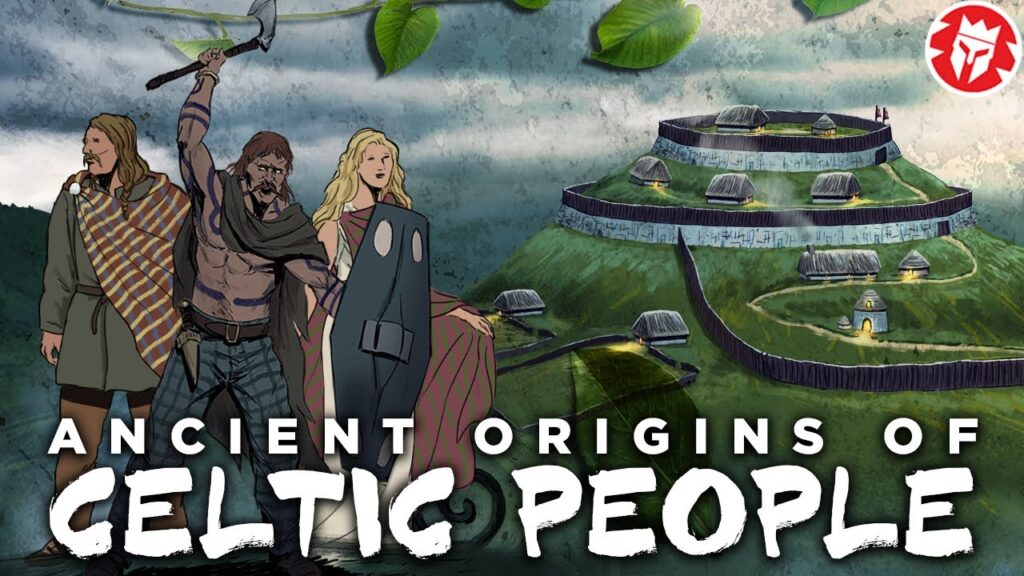The Ancient Celts
The Celts were a mysterious and enigmatic people who left behind little written records of their existence. Through archaeological and etymological evidence, we can piece together their culture and society.
The Hallstatt Culture
The Hallstatt culture, named after the town in Austria where it was discovered, is considered the birthplace of the early Celtic society. It emerged around 1200-800 BC and was based on mining salt, copper, and tin, and trading them to outlying regions.
The Development of the Celts
As the Hallstatt culture developed, the Celts introduced ironworking, built hillforts, and developed a class system and social inequality. They also developed a unique art style, featuring geometric and animalistic motifs.
The La Tene Culture
The La Tene culture, which lasted from around 450-50 BC, is considered the most iconic era of ancient Celtic history. It was characterized by the development of a distinctive art style, featuring spiral patterns, and the expansion of the Celts across Europe.
Celtic Society
Celtic society was organized into tribes, ruled by a hereditary chief and his warrior aristocracy. The Celts were skilled metallurgists, farmers, and traders, and lived in small rural communities.
Celtic Religion
The Celts had a complex polytheistic religion, with over 400 known deities. They believed in the power of the gods and goddesses, and had a strong tradition of druidism. The druids were a class of professional priests who wielded significant political influence and facilitated religious rites.
| Term | Definition | Example Usage |
|---|---|---|
| Hallstatt Culture | A prehistoric culture that emerged in Austria around 1200-800 BC, characterized by mining and trading salt, copper, and tin. | The Hallstatt culture is considered the birthplace of the early Celtic society. |
| La Tene Culture | A prehistoric culture that lasted from around 450-50 BC, characterized by the development of a distinctive art style and the expansion of the Celts across Europe. | The La Tene culture is considered the most iconic era of ancient Celtic history. |
| Druidism | A class of professional priests who wielded significant political influence and facilitated religious rites in ancient Celtic society. | The druids were a key part of Celtic religion and played a crucial role in facilitating religious rites. |
| Polytheistic | Believing in the existence of multiple gods and goddesses. | The Celts had a complex polytheistic religion with over 400 known deities. |
| Tribal | Relating to a group of people who share a common ancestry, culture, or identity. | Celtic society was organized into tribes, each with their own distinct culture and identity. |
| Hereditary Chief | A leader who inherits their position through family lineage. | The Celts were ruled by a hereditary chief and his warrior aristocracy. |
| Warrior Aristocracy | A group of nobles who are skilled in warfare and hold positions of power and influence. | The Celts were ruled by a hereditary chief and his warrior aristocracy. |
| Metallurgists | Skilled craftsmen who work with metals, such as ironworking. | The Celts were skilled metallurgists, farmers, and traders. |
| Rural Communities | Small communities of people who live in the countryside. | The Celts lived in small rural communities. |
Vocabulary Quiz: The Ancient Celts
Choose the correct answer for each question:
- What does the word “enigmatic” mean?
- A) A mysterious or difficult to understand person or thing
- B) A person or thing that is easy to understand
- C) A person or thing that is only partially known
- D) A person or thing that is completely unknown
- What is “etymological” evidence?
- A) Evidence from the study of the origin and history of words
- B) Evidence from the study of ancient cultures
- C) Evidence from archaeological digs
- D) Evidence from written records
- What does “hereditary” mean?
- A) Passed down from one generation to the next
- B) Acquired through hard work and dedication
- C) Given by a king or queen
- D) Earned through battle or conquest
- What is “polytheistic” religion?
- A) Belief in one god or goddess
- B) Belief in multiple gods and goddesses
- C) Belief in no gods or goddesses
- D) Belief in a single, all-powerful deity
- What does “wielded” mean in the context of the druids?
- A) Held or carried something
- B) Used or exercised power or influence
- C) Spoke or communicated something
- D) Thought or believed something
Answer Key:
- A) A mysterious or difficult to understand person or thing
- A) Evidence from the study of the origin and history of words
- A) Passed down from one generation to the next
- B) Belief in multiple gods and goddesses
- B) Used or exercised power or influence
The Use of the Past Perfect Simple and Past Perfect Continuous
| Explanation |
|---|
| The Past Perfect Simple (had + past participle) is used to describe an action that occurred before another action in the past. It emphasizes the completion of the first action before the second action started. The Past Perfect Continuous (had been + verb-ing) is used to describe an action that started before another action in the past and continued up to the time of the second action. It emphasizes the duration of the first action leading up to the second action. |
Grammar Quiz
1. By the time the Hallstatt culture emerged, the Celts ________________________ (develop) their unique art style.
A) had developed
B) were developing
C) develop
D) had been developing
2. The Celts ________________________ (introduce) ironworking by the time they built hillforts.
A) had introduced
B) were introducing
C) introduced
D) had been introducing
3. By the time the La Tene culture started, the Celts ________________________ (expand) across Europe for centuries.
A) had expanded
B) were expanding
C) expanded
D) had been expanding
4. The druids ________________________ (wield) significant political influence for generations before the Roman conquest.
A) had wielded
B) were wielding
C) wielded
D) had been wielding
5. By the time the Celts established their tribes, they ________________________ (live) in small rural communities for centuries.
A) had lived
B) were living
C) lived
D) had been living
Quiz Answer Key
1. A) had developed
2. A) had introduced
3. A) had expanded
4. A) had wielded
5. A) had lived




